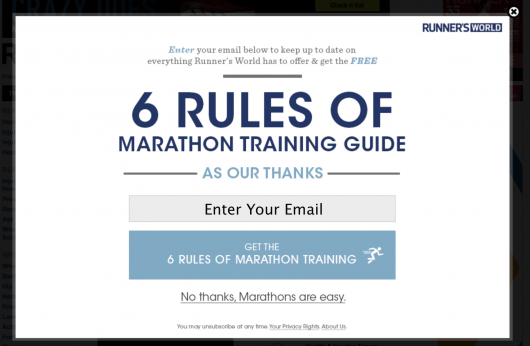“Content is king” is something we hear frequently — but even a king has boundaries to his dominion.
While content is definitely a critical component of your online presence and allows you to engage with the public in creative, organic ways, the best content in the world means nothing for your business if your business isn’t earning profit.
You need to make sure your blog and website are set up to encourage people to inquire about — and ultimately buy — your product or services.
Every item you post has to have some measurable goal that defines its success.
Maybe you have a target number of blog subscribers, ebook downloads, traffic to a product or service page, contact form submissions, or even just social media shares.
How do you develop these goals?
Ultimately, you need to have some set goal for how much business you want to bring in.
From there, you break it down into department goals: sales goals, marketing goals, and so forth, all the way down to your channels — including your blog.
But how do you start to bring together your readers with opportunities for you to sell?
Here’s a few tips.
Encourage blog subscriptions
This one is kind of a no-brainer, but getting people to subscribe to your blog keeps your brand within their view on a consistent basis.
We’ve found that positioning the blog subscription at the bottom of each post to be the most effective.
![email subscription]() Use a relevant call-to-action (CTA) at the end of each blog post
Use a relevant call-to-action (CTA) at the end of each blog post
You’re writing relevant content, after all.
Tie it directly back to your products and services.
Here’s an example from TalentSorter. For a blog post about interview questions to ask to help hire for “fit”, they included this CTA for a free trial of their product (that also helps you hire for “fit”).

Make the CTA relevant to the content your visitors are reading.
Pull attention at key moments
Exit popups as well as sticky bars are great ways to make your point while your audience is browsing your site.
The key here is controlling your readers’ movement.
Catch them during a transition; re-captivate them to refresh their engagement with your site and nudge them along to conversion.
Again, it’s all about relevancy. Instead of having a one-size fits all pop-up across you site, use several.
For example, if your blog post is about tiling, offer a tiling project check-list like Tile Mountain does:

Image source: Optimonk.com
If your blog is about running and exercising, offer your visitors a marathon training guide like Runners World:

Image source: Optinmonster.com
Content isn’t king – content AND context AND a relevant CTA is king.
Content isn’t king – content AND context AND a relevant CTA is king.
Drive users to your product or service page
For example, if your post discusses influencer marketing campaigns, let people know you offer influence marketing services.
Do this both directly — such as by linking to the product or services sales page — or combine it with an indirect approach by using images straight from your product.
![blog and service tie-in]() Survey or poll your users
Survey or poll your users
While not necessarily a lead gen tactic, the info you can glean here can be gold – and, at the very least, you’ve got your audience engaging with the topics you care about.
Ask them a question, whether you use it as another input for designing campaigns, or even if it’s a basic site question like “did you find the info you were looking for?” or “how likely is it that you would recommend this blog post to a friend or colleague”?

Image source: SurveyMonkey.com
Use a chat bot
Ok, talking to a real live person is always better, but bots have their use too. If your visitor has a question they want answered quickly, a bot can help serve the info up quickly.
This can make all the difference between losing someone altogether or getting them into the buying process!
Just make sure your chatbot is adding value (see example on left) and not causing user frustration (see example on right)…

Image Source: Medium.com
Leverage retargeting
Use a tracking pixel on your site that lets you drop a cookie into every visitor’s browser (with their permission).
This then places targeted ads for them in any open space across the web, including Facebook. People may leave your site early for reasons outside of “lack of interest.”
Retargeting them with an ebook, a demo, a download, or a special offer is how you can help bring them back into your marketing funnel.

Image source: referralsaasquatch.com
While this list is by no means comprehensive, it’s a great start as you consider ways to turn your blog reads into business leads.
Looking for help turning your website visitors into customers?
Check out our Website Conversion Services or Contact Us Today.
The post How To Turn Blog Reads Into Leads appeared first on Sensei Marketing.
 Use a relevant call-to-action (CTA) at the end of each blog post
Use a relevant call-to-action (CTA) at the end of each blog post Survey or poll your users
Survey or poll your users